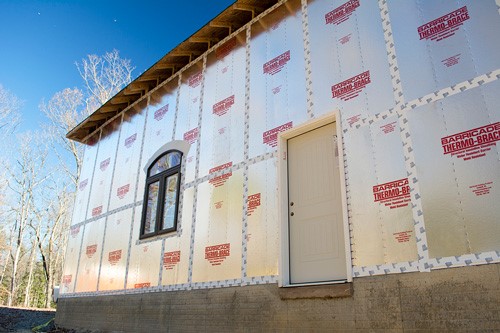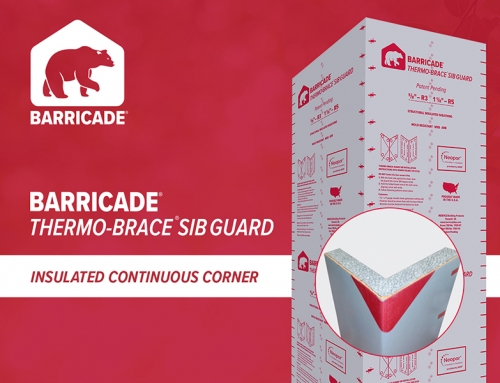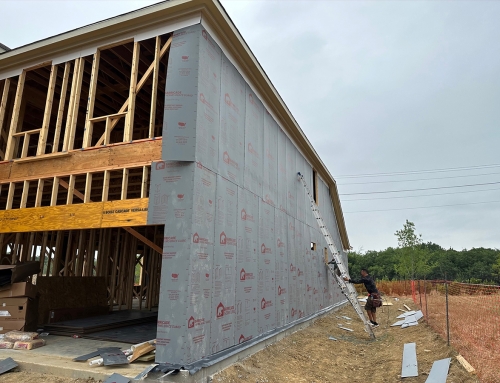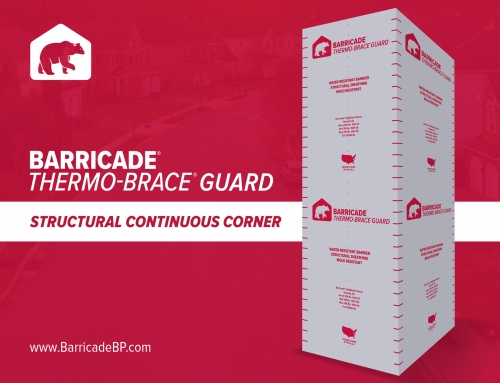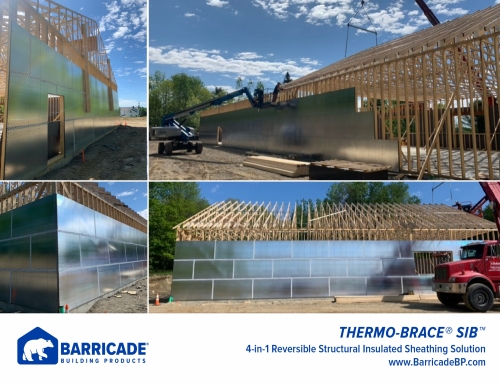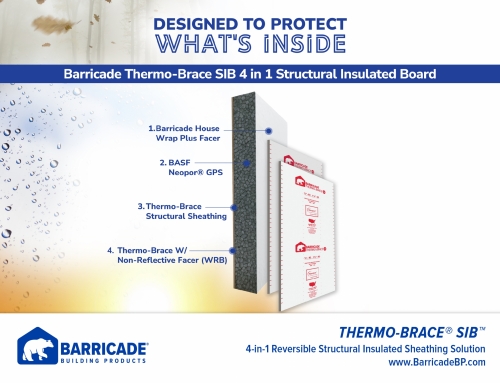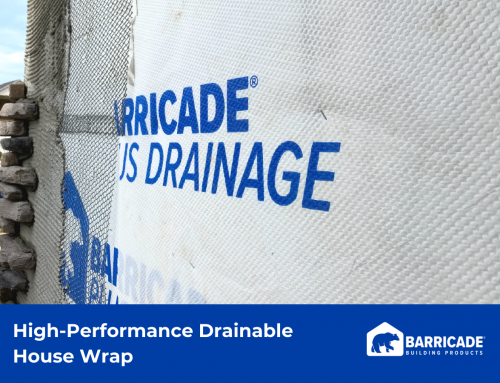Sheathing plays an integral role in the construction of every home or building. Whether structural or insulating, sheathing helps with the installation of siding and the development of the building envelope.
With rising energy costs, it’s now common for new homes and buildings to be constructed with continuous insulation as well. Continuous insulation, whether through the use of insulating sheathing or other types of insulation, helps to provide an air-tight building envelope, preventing air transfer between the interior and exterior. This, in turn, helps to stop energy leaks and contributes to a more comfortable and energy-efficient building.
Continuous insulation and a tight building envelope do have some drawbacks, however. One of these is the infiltration of moisture or the build-up of condensation on the interior of the walls, beneath the insulation. Using the right type of sheathing beneath your siding can help prevent this issue from occurring, giving you the continuous insulation you want, without the associated issues.
THE ROLE OF STRUCTURAL SHEATHING
Structural sheathing is necessary for many homes and buildings to help join together studs, and provide a hanging surface for the siding. Structural sheathing makes a home or building stronger, providing structural support beneath the exterior cladding.
Unfortunately, most types of structural sheathing – such as cardboard – are not insulating on their own. They also suffer from drawbacks such as being susceptible to moisture. Some types of sheathing may also become spongy due to the composition, which means that adhering them tightly to the framing becomes difficult, resulting in the type of air infiltration that continuous insulation is meant to keep out. In most buildings, however, structural sheathing is necessary to provide the strength and support needed to complete the façade. Therefore, creating a continuous insulation envelope means rethinking how sheathing is being applied to the exterior, and what type of sheathing is being used.
USING A BETTER SHEATHING
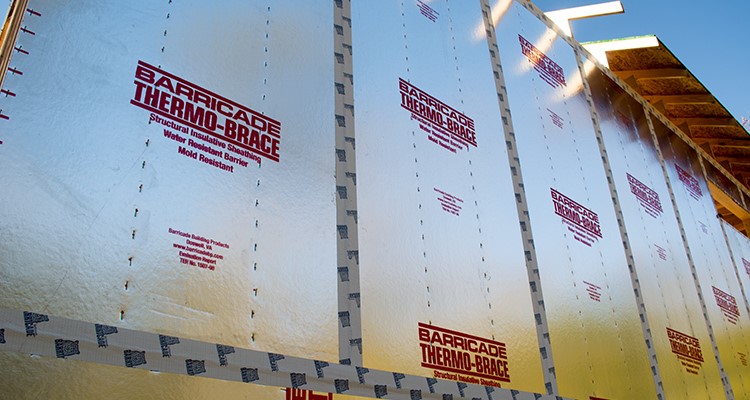
There are several different types of structural sheathing available, including not only plywood but also wafer board, exterior gypsum board, and oriented strand board (OSB). Each has its own issues to contend with, which may not make them the best fit when creating continuous insulation in the building envelope.
Barricade Thermo-Brace is an alternative structural sheathing that can assist in creating the type of tight building envelope necessary with today’s energy costs. Thermo-Brace is designed with fibers that add dimensional stability and strength to each of the panels.
This stability means that each 1/8-inch panel can be tightly fitted to the joints and studs of the frame, helping to eliminate the air infiltration and gaps that frequently accompany typical sheathing. This, in turn, helps to create a better base for the continuous insulation and the tight building envelope you’re trying to achieve.
Without the typical gaps found in the sheathing, the continuous insulation can provide more even coverage across the entire exterior. This means a tighter envelope can be achieved with less labor.
MOISTURE MANAGEMENT
The biggest drawback to using continuous insulation in a tight building envelope is moisture. The difference in temperature between the interior and exterior, along with the difference in humidity levels and the lack of air transfer, often means that moisture can build up inside the walls of the home or building. At the same time, not having a tightly fitted exterior sheathing can allow water to infiltrate the home from the outside. So, not only is water getting in, it’s having a tough time escaping from the walls.
Over time, this leads to issues such as wood rot and mold growth. With moisture damage to the walls themselves, even the structural sheathing may begin to fail over time, particularly if plywood is the material being used.
Thermo-Brace offers superior moisture management in addition to strength and stability. The tight seal offered by the sheathing helps prevent water infiltration at the sight of the joints – a common issue with most sheathing, which can become spongy.
When paired with typical vapor barriers, which allow moisture to escape, Thermo-Brace provides the first line of defense against moisture damage that can lead to structural failure over time.
ENHANCED ENERGY PERFORMANCE
Thermo-Brace also offers the ability to help enhance the energy performance of the home or building – a plus when designing a building with continuous insulation. This is provided by the reflective foil facings that are available on each sheet.
Used as part of a full system of products designed to offer support and insulating properties, Thermo-Brace structural sheathing can help create a more structurally sound building without the worry of damage.
BUILD A BETTER BUILDING
While sheathing is a necessary part of every building, you do have a choice as to what type of material you use. Choose a better sheathing, like Barricade Thermo-Brace, to provide a better building envelope each and every time.

